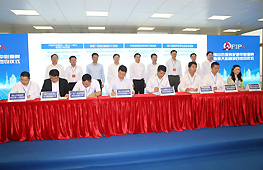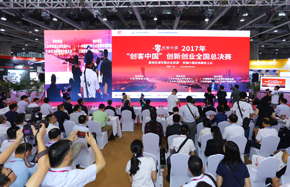CFLD’s executive president shares PPP model experience with World Bank officials
At the invitation of the World Bank, China Fortune Land Development (CFLD) Co Ltd. attended an experience-sharing conference on the Chinese Public-Private Partnership (PPP) model as the country's only representative of social capital promotion via PPP at the international financial body's headquarters in Washington D.C. on September 18 (local time).
The event was co-sponsored by the World Bank and the China Public Private Partnerships Center affiliated to the Ministry of Finance.
Zhang Shufeng, executive president of the CFLD, described to attendees the innovations and practices of the developmental PPP model in the building of its New Industry City projects. His description was well received by the World Bank and other international organizations present at the conference.
Those attending included Jason Zhengrong Lu, director of the Global Infrastructure Fund (GIF) of the World Bank; Chiaki Yamamoto, senior expert of the World Bank PPP Project; David Duarte Arancibia, senior World Bank expert in charge of infrastructure finance and PPP project guarantees; and Xianyong (Eric) Gao, chartered financial analyst of International Finance Corporation and its chief investment officer in China.
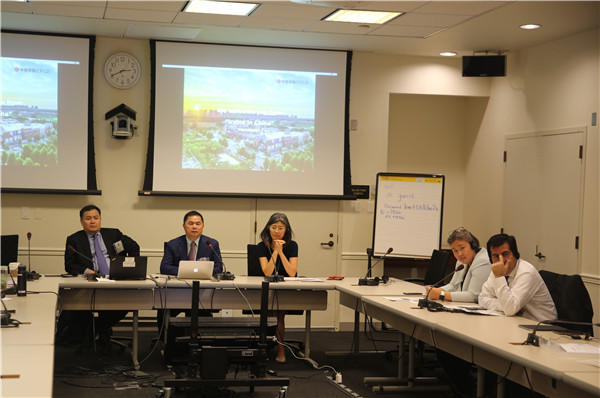 |
|
From left to right: Jiao Xiaoping, director of the China Public Private Partnerships Center; Zhang Shufeng, executive president of the CFLD; Chiaki Yamamoto, senior PPP expert of the Infrastructure Finance, PPPs and Guarantees (IPG) Group of the World Bank; Junglim Hahm, senior infrastructure expert of the Infrastructure Finance, PPPs and Guarantees (IPG) Group of the World Bank; David Duarte, senior PPP expert of the Infrastructure Finance, PPPs and Guarantees (IPG) Group of the World Bank. |
Developmental PPP Model: Important Innovation in the Development of Traditional Economies
Zhang said in his address at the conference that the developmental PPP model of the New Industry City is a comprehensive and market-driven solution for the problems and difficulties facing China's counties in their economic development. Drawing on relevant experience of developed countries, the CFLD has built its market-oriented and innovative PPP model in close accordance with Chinese national conditions.
Zhang went on to remark that the developmental PPP model of the New Industry City is hugely important in systematically shoring up the points of weakness in economically underdeveloped regions and helping them achieve leapfrog development.
Jason Zhengrong Lu gave high praise to the CFLD for its developmental PPP model of the New Industry City.
Joao Reye Sabino, head of the GIF investment programs, said that the GIF has made greater and greater investments in China's infrastructure construction, transportation and energy projects, and added that it will further strengthen communications with the CFLD in relevant fields in the future.
Sabino noted that social capital has developed a closer partnership with the government as a market entity and that their bilateral cooperation has boasted natural advantages in complementarity and sound credit. The CFLD's developmental PPP model of the New Industry City covers both project building and long-term management in a drive to ensure self-sustaining, self-cycling, and sustainable revenues of relevant programs, which is the same line of thinking as that of the World Bank.
The CFLD's developmental PPP model of the New Industry City will enable local governments in China to enhance their competence in program administration and improve the reform and transformation of their operational modes, emphasized Sabino, who went on to describe it as an important innovation to the development model of traditional Chinese economies.
During a meeting with Zhang, Yang Yingming, executive director for China at the World Bank Group, said that the international body has paid more attention to the changes in the roles of government and markets in the process of urbanization in developing countries, whilst committing itself to that urbanization.
The CFLD's developmental PPP model of the New Industry City has fundamentally transformed the traditional investment model of local governments in China in civic construction and provided the World Bank with valuable inspirations for financially supporting the country's urbanization development and infrastructure building in economically underdeveloped regions, noted Yang, who added that the Executive Office of China at the World Bank Group will extend its full assistance to the development of a partnership between the CFLD and the international organization in the future.
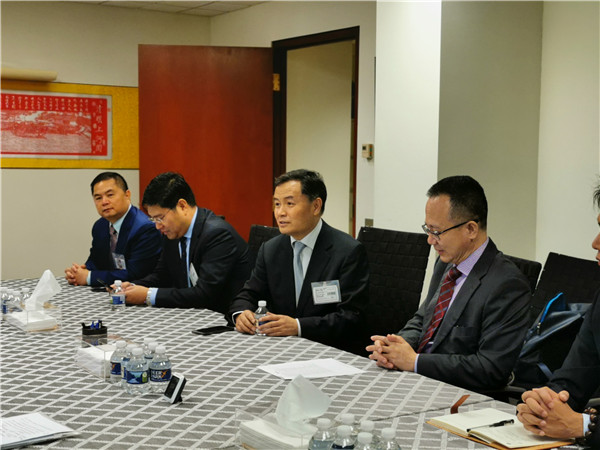 |
|
From left to right: Zhang Shufeng, executive president of the CFLD; Zhao Yanchao, vice-director of the Ministry of Finance's Information Management Center; Jiao Xiaoping, director of the China Public Private Partnerships Center; and Yang Yingming, executive director for China at the World Bank Group. |
Overseas Inspirations to Promote County-level Economic Development
China has made remarkable achievements in its economic development and become the second largest economy in the world during the past four decades. Nevertheless, there is still a large gap between China and developed countries in their urbanization.
On the one hand, there are no obvious differences between large cities in China such as Beijing, Shanghai, Guangzhou and Shenzhen, and their counterparts in developed countries. On the other hand, the economic growth of Chinese counties remains sluggish.
There are over 2,800 counties in China, the percentages of whose land and population in the whole country are 91 percent and 71 percent respectively.
Zhang mentioned an old Chinese saying to the effect that if the counties are well governed, then everywhere will be safe. However, the vast county-level regions in China have shown a severe lack of vitality in economic growth. The disparity between them and their counterparts in developed countries is very large.
China's counties have been generally short of capital, professional talents and well-functioning infrastructure, and have failed to lure high-end industries, technologies and talents. By contrast, small cities in developed countries have already become top destinations for the headquarters of many large-scale enterprises, including some of the world's top 500 companies, because of their advanced supporting facilities, beautiful environments and comfortable living conditions.
Take Irvine, a small town in Orange county in the state of California, as an example. It covers an area of about 88 square kilometers and has a population of 266,000. About one-third of the world's top 500 companies have set up offices in Irvine. At present, there are 26,000 companies and 235,000 employees there, generating annual tax revenue of roughly U.S. $ 40 billion.
Zhang explained that the success of Irvine has provided the CFLD with huge inspiration in accelerating the economic growth of Chinese counties. The building of a New Industry City cannot solely rely on governmental investment since a majority of governments cannot afford such a giant scheme, which is a systematic project and demands professional talents and technologies, as well as the latest concepts and models concerning urban administration.
Thus the insufficiency of capital, talents, technologies and industries is the weakest point restraining the economic development of a county. In response, the CFLD has come up with its developmental PPP model of the New Industry City in practice and summarized it into a code, the so-called 16443.
According to that code, industrial development occupies the central place. Drawing upon the experience and practice of Irvine, the CFLD has provided county-level governments with six types of services, which include the consultation for planning and design, land consolidation, infrastructure development, the building of public facilities, industrial development, and urban operation and maintenance.
In this way, the CFLD has shored up the four weak points such as the shortage of capital, talents, technologies and industries in the development of a county's economy, built a New Industry City featuring unique charisma, appeal, capacity and competitiveness, and attracted a collection of high-end industries with the latest technology and high-skilled talents in a drive to advance high-quality regional economic growth.
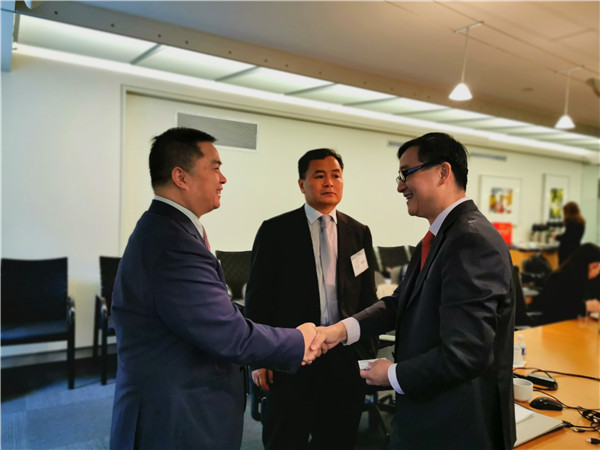 |
|
From left to right: Zhang Shufeng, executive president of the CFLD; Jiao Xiaoping, director of the China Public Private Partnerships Center; and Jason Zhengrong Lu, director of the Infrastructure Finance, PPPs and Guarantees (IPG) Group and the Global Infrastructure Fund (GIF) of the World Bank. |
The Innovation of PPP Mechanisms Brings Win-win Cooperation
Zhang explained that the CFLD has emphasized the principles of self-sustaining and compatible incentives in the operation of its developmental PPP model of the New Industry City and thus generated win-win cooperation between it and the governments concerned.
The self-sustaining principle has relieved the concerns of local governments to invest, guarantee or sign a minimum-guarantee clause, when it comes to the building of a New Industry City under the PPP model. The utility of social capital has helped a New Industry City lure high-end industries, the latest technologies and high-skilled talents, produced additional fiscal revenue in the areas of cooperation, and boosted the payment abilities of local governments. The government will then collect newly added fiscal revenue to pay for developmental PPP service fees, achieving an internal balance between revenue and expenditure and healthy budgetary development in the region affected.
According to the principle of compatible incentives, the government will authorize social capital with specific economic development tasks in a region and evaluate its performance through comprehensive criteria such as fiscal revenue, GDP, people's livelihoods, employment, and ecological conservation. Only when involved social capital meets these standards will local governments pay for relevant PPP services with newly created financial revenue in the region.
Social capital will get more payment for their PPP services when producing enough fiscal revenue under the principle of compatible incentives, and vice versa. Involved enterprises are highly motivated and there is no risk for the government in the developmental PPP model of the New Industry City since the two sides have common goals and will make full use of their separate strengths.
The CFLD will provide local governments with professional services such as planning and design, land consolidation, infrastructure development, building of public facilities, industrial development, and urban operation and maintenance under the principle of compatible incentives, developing a comprehensive and systematic solution to the high-quality growth of a county.
Zhang said that the CFLD has made investments in and is directly operating 77 new industry cities at present, 30 of which are listed in the PPP project pool released by the Ministry of Finance.
More specifically, five such projects, which are located in Gu'an of north China's Hebei province, Lishui of east China's Jiangsu province, Nanxun in east China's Zhejiang province, Tuanfeng in central China's Hubei province, and Xinzheng in central China's Henan province, have been recognized by the Ministry of Finance as national demonstration PPP programs.
In addition, the projects in Gu'an and Lai'an of east China's Anhui province have been listed by the National Development and Reform Commission as typical PPP cases.
Furthermore, the UN in May 2018 added the New Industry City in Gu'an to its list of 60 people-oriented and sustainable development classified PPP projects, and the local Zhejiang government also recently put the New Industry City in Jiashan county and Jiashan itself onto a list of high-quality development representative cases.









